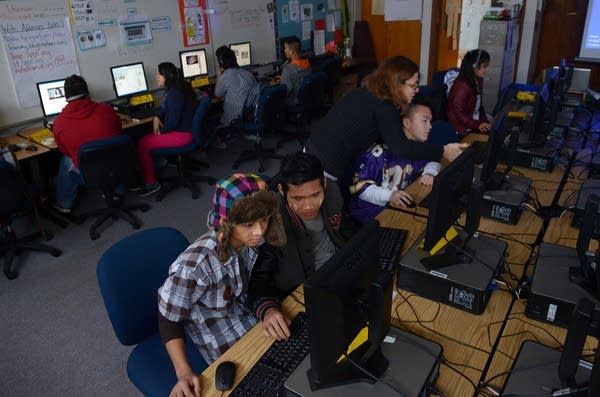Teenagers without English skills face highest high school hurdles of all

Sandy Lucas leads students in a computer coding lesson at St. Paul's LEAP, Limited English Achievement Program, High School on Friday, December 13, 2013.
Amanda Snyder / MPR News
Go Deeper.
Create an account or log in to save stories.
Like this?
Thanks for liking this story! We have added it to a list of your favorite stories.


